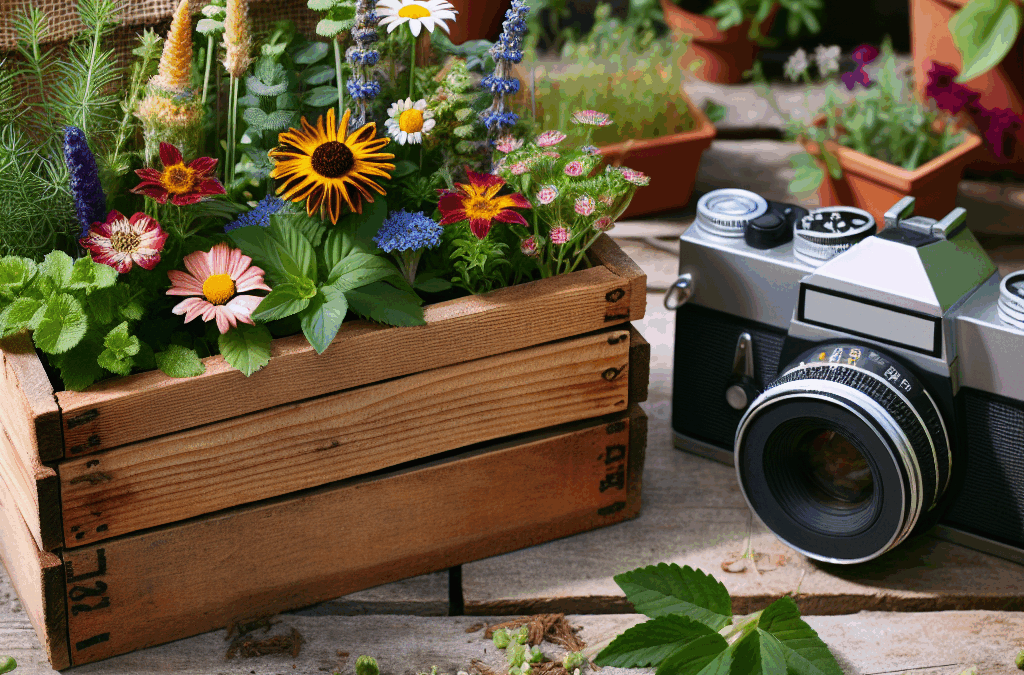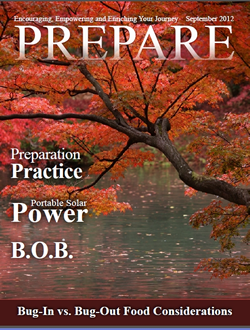Hey there, fellow garden lovers! If you’ve ever found yourself battling those annoying pests that invade our precious gardens, you know how frustrating it can be. But what if I told you that you can create effective insect repellents right from your garden? I’ve been experimenting and honing these DIY natural insect repellents, and I’m excited to share my findings with you. Let’s dive in!
Essential Herbs for Repelling Insects
Choosing the Right Herbs
First things first, let’s talk about herbs! Not only are they fantastic for cooking, but many herbs have powerful insect-repelling properties. Think basil, mint, and rosemary, for starters. I like to keep basil close to my tomatoes because it not only enhances their flavor but helps keep those pesky tomato hornworms at bay.
Mint is another superstar in the garden. I remember planting some in a corner not expecting much, but I was pleasantly surprised to find it not only brightened up my garden but also kept ants and mosquitoes away. Just be careful; mint can take over if not contained!
Rosemary is a dense shrub that does wonders in deterring flies and mosquitoes. I often crush some leaves and rub them on my skin for a natural repellent. Plus, the scent is just divine!
Planting Strategies
Positioning your herbs wisely can really up your repelling game! I like to interplant them with other flowers and vegetables, creating a little barrier. The aroma these herbs give off creates a natural deterrent that can confuse and repel insects.
You’re going to want to create a symbiotic relationship in your garden. For example, planting garlic near roses can keep aphids at bay. It’s like having a little army on your side! I’ve seen a noticeable difference in the health of my plants by using this technique.
Don’t forget to consider companion planting. By mixing and matching, you can create a natural ecosystem where beneficial insects help keep the bad ones in check!
Harvesting and Using the Herbs
Once your herbs are thriving, it’s time to get crafty. I love to make my own insect repellent sprays! Simply chop up a handful of your chosen herbs, steep them in hot water, strain it, and voilà! You have yourself a potent insect repellent liquid.
Sometimes, I like to add a bit of essential oil, like eucalyptus or tea tree, to enhance the potency. Just a few drops mixed in can make a world of difference. Spray this mix on your plants and even use it on yourself when heading out to the garden—it’s safe and natural!
Remember, you can also dry these herbs and store them for future use. I tend to make little sachets of dried herbs that I hang around my garden shed. They smell great and act as an extra line of defense against insects!
Natural Oils as Insect Repellents
Choosing the Right Essential Oils
Alright, let’s chat about essential oils! These little bottles pack a punch when it comes to insect repelling. Some of my go-tos include tea tree oil, citronella, and lavender. Each has unique properties that deter different bugs.
For instance, lemongrass is another fantastic option. I recall using it during a summer picnic, and it kept the mosquitoes from ruining our fun! It’s affordable and has that fresh scent everyone seems to love. I’m also a big fan of lavender—it’s calming for humans but repulsive for insects!
A quick tip: always go for high-quality oils if you can. I’ve learned the hard way that cheaper oils can be diluted and less effective. Don’t skimp on this part for the best results!
Creating Your Own Repellent Blends
Now comes the fun part—mixing your own sprays! I usually take a small spray bottle and fill it with water, a couple of tablespoons of witch hazel or vodka, and add about 10-15 drops of my chosen essential oils.
Shaking this mixture well will create a natural repellent that you can spray directly onto your skin or around your home. Just be sure to do a patch test if you have sensitive skin. I’ve had a few instances where friends didn’t bother to check before spraying. Ouch!
If you’re feeling adventurous, you can even play around with blends! For example, a mix of eucalyptus and peppermint can create a refreshing and powerful repellent. I love to experiment and find what works best for me.
Using Oils in Your Garden
You can also use essential oils directly in your garden! Sometimes, I like to dilute them in water and spray them directly on the plants that attract bugs. Just ensure that you don’t overdo it; a little goes a long way!
I’ve also discovered that placing cotton balls soaked in essential oils around the perimeters of my garden can act as a barrier. It’s amazing how effective simple household items can be—simple hacks like these can save your garden from being ravaged!
Don’t forget to refresh the oils after a rain. You don’t want your efforts washed away. I make a habit of reapplying after any heavy downpours, ensuring my defenses are always up!
Using Natural Traps
Creating Traps from Household Items
Who doesn’t love the idea of repurposing everyday items? I often make simple traps using common household goods. For instance, a bowl of soapy water can attract and trap those pesky fruit flies. It’s best to keep these traps out where the bugs congregate, and trust me, they work like a charm!
You can also use old bottles to create funnel traps for wasps and other insects. Just cut the top off, turn it upside down, and secure it back into the bottom half. Place some sugar water at the bottom, and the buggers will find their way in but won’t know how to escape!
The best part? You’re giving new life to trash while keeping your garden safe. It’s a win-win situation!
Using Natural Bait
For some insects, using bait works best. I’ve had great success drawing in pests away from my valuable plants by offering them something else to munch on. For instance, I like to set up a small bowl of beer to capture slugs and snails. They might find it appealing, but it’s not good for them!
Similarly, you can use overripe fruits to draw out fruit flies. Place them in traps, and you’ll notice a significant reduction in unwanted guests around your tomato plants. It’s all about outsmarting them!
Patience is key here, folks. It might take a bit to see results, but trust me, the wait is worth it when you can enjoy a bug-free garden.
Best Practices for Traps
Regularly checking and maintaining traps is crucial. I always make it a point to clean them out and refresh my bait regularly. A messy trap can be counterproductive and attract even more pests than it catches!
Positioning is also essential. I’ve learned from experience that setting traps in the right spots maximizes their effectiveness. Shadowy corners and areas near plants can be hotspots for pesky bugs looking for a place to hide.
Finally, have fun with it! Decorating your traps can make them more appealing, and it adds a little personality to your garden. Even if your traps aren’t working perfectly, at least they look cute!
Maintaining Your Garden Ecosystem
Encouraging Beneficial Insects
Let’s talk about the good guys in the garden. Not all insects are bad, and we can attract beneficial ones to help keep the pests at bay. I love creating habitats for ladybugs and lacewings, as they munch on aphids like they’re going out of style!
To bring these helpful insects into your garden, plant a variety of flowers like marigolds and dill. I’ve found that creating little nooks with mulch or stones can provide shelter for them, making them feel at home.
Learning to identify and promote beneficial insects will transform your gardening experience. You’ll start to see fewer pests naturally, and it brings a wonderful balance to your garden ecosystem!
Natural Fertilizers and Soil Health
Healthy plants are more resilient against pests. I’ve personally experienced how enriching soil with compost and organic matter can bolster plant health, making them less appealing to unwanted insects. Healthier plants can handle a bit of pest pressure without taking a hit!
Another trick? Regularly rotating crops and adding organic fertilizers will keep your soil thriving, avoiding pest infestations tied to nutrient depletion. Trust me; your plants will thank you for the extra love!
Consider mulching as well! It helps retain moisture, suppress weeds, and ultimately contribute to healthy roots. The more fortified your plants are, the better they can withstand any bug invaders!
Regular Maintenance Routine
I can’t stress this enough: regular check-ups in your garden will make all the difference. Keeping an eye on plant health means you can address pest issues before they become serious. I devote a little time each week to inspect my plants closely.
Additionally, cleaning up fallen debris and rotting fruits helps keep pests away. An untidy garden can attract unwelcome guests. I’ve learned that staying on top of this routine makes my garden much more enjoyable and abundant!
At the end of the day, you’ll find that the more love and attention you give to your garden, the better it responds. Your hard work will certainly pay off with a vibrant and pest-free paradise!
FAQs about DIY Natural Insect Repellents from Your Garden
1. What are the best herbs to use for insect repellents?
The best herbs include basil, mint, and rosemary. These are effective in repelling common pests while also adding flavor to your cooking.
2. How do I make a natural insect repellent spray?
To make a natural insect repellent spray, steep chosen herbs in hot water, strain the mixture, and add a few drops of essential oils. Fill it in a spray bottle and use as needed!
3. Can essential oils be harmful to pets?
Some essential oils can be harmful to pets. Always do thorough research and consult a veterinarian about which oils are safe for your furry friends.
4. How can I attract beneficial insects to my garden?
You can attract beneficial insects by planting flowers like marigolds or dill and creating habitats with mulch or stones for them to thrive.
5. Is it possible to create traps using household items?
Absolutely! Traps can be made from household items like jars, bottles, and even soapy water to catch different pests effectively.





